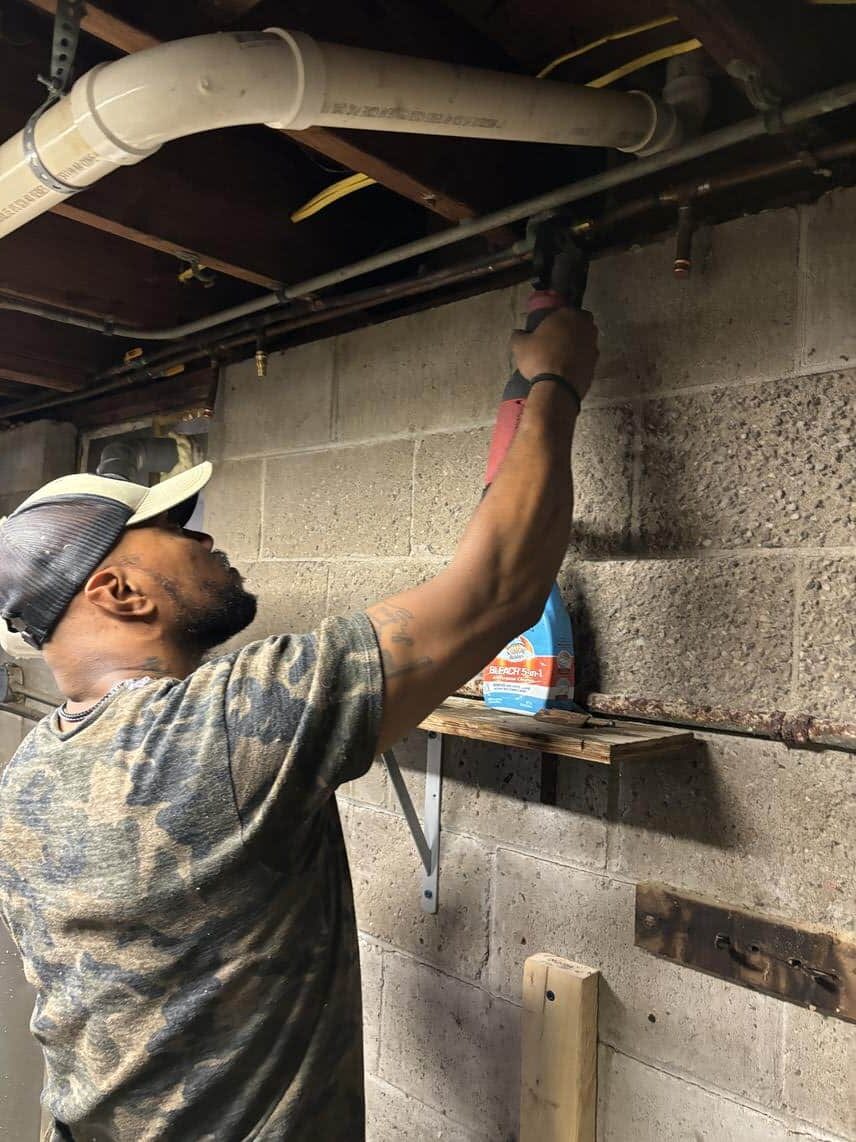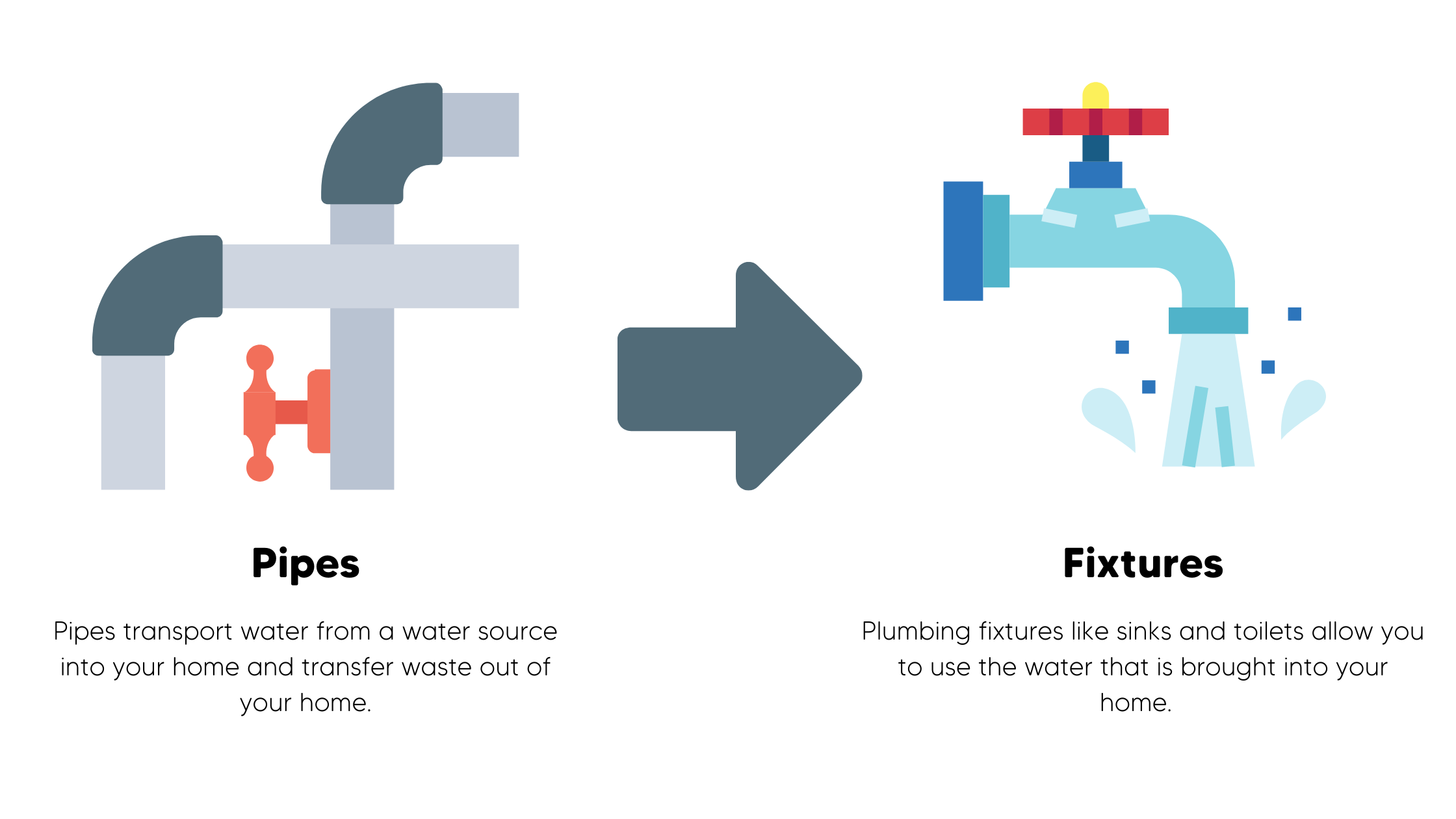Alexander Plumbing And Remodeling - The Facts
Wiki Article
The Only Guide for Alexander Plumbing And Remodeling
Table of ContentsUnknown Facts About Alexander Plumbing And RemodelingAlexander Plumbing And Remodeling for BeginnersAlexander Plumbing And Remodeling Can Be Fun For AnyoneThe smart Trick of Alexander Plumbing And Remodeling That Nobody is DiscussingThe Buzz on Alexander Plumbing And RemodelingA Biased View of Alexander Plumbing And Remodeling4 Easy Facts About Alexander Plumbing And Remodeling Described
If you see that your inner walls around the pile show up to be wet, your plumbing pile might be dripping. Also a minor leak in the pipeline can bring about a pipe burst, so call an expert quickly. If you discover a dreadful scent in your home, it could show a leaking plumbing stack.In the occasion of leakages, these harmful gases can develop a nasty smell in your home. A leakage in your pipes pile and damp spots on walls can result in mold formation, deteriorating your walls. If you observe any kind of corrosion on or around your pipes pile, you need to call a plumbing technician to evaluate the circumstance
This is because, along with being unhygienic and troublesome, household pipes pile repairs and substitutes can be really pricey. Depending on the plumbing pile you have and what the concern is, the fixings can differ in intricacy and price. The price of replacing a plumbing stack depends on where it's positioned in the home and just how large of a pile you require.
Not known Facts About Alexander Plumbing And Remodeling
The price likewise depends on the pile's size and the materials made use of to develop it, the labor charges, and any type of other unforeseen costs. On standard, expect to pay between $1,500 and $4,000 to replace your pipes stack, according to HomeAdvisor. A pipes pile is a critical element of any kind of home's plumbing system.Worn out of slow water drainage? Your pipes pile may be the trouble. Keep reading to find out more regarding what a plumbing stack is and why it is essential to your home.

Pipes vents safeguard plumbing traps. They do not make components drain pipes quicker; actually, they do the contrary. When it involves very first time home purchasers, one of the least understood parts of a home appears to be plumbing vents. They're those pipelines holding up out of the roof covering that run via the attic room and through the rest of the residence.
Vents are often connected with each other inside the attic, which permits fewer infiltrations in the roof. Let me duplicate that: plumbing vents protect against catches from being siphoned. They likewise prevent back-pressure on traps, yet today the focus gets on siphoning. You might have heard that pipes fixtures will drain much faster when they're vented appropriately, but it's not real.
The Only Guide to Alexander Plumbing And Remodeling
You enjoy the water glug out while air changes it, and this makes it drain slowly. When you place an opening in the top, water drains pipes out extremely swiftly due to the fact that air can change the water as it drains. This analogy doesn't hold water due to the fact that the top of every plumbing fixture is large open.The top of a sink is open. The top of a tub is open. If you wished to re-create the soda bottle example, you would certainly require to enclose the top of the pipes component and after that attempt to drain the water out. I can not think about any instance where this might potentially occur.

Plumbing isn't just concerning obtaining water where you require itit's likewise concerning getting rid of pre-owned water safely. A plumbing drainage system takes used water from components and moves it to either the main sewage system line or sewage-disposal tank. And it has to do so without polluting clean water or dripping sewer. A water drainage system contains piping that communicates sewer, rain, or various other fluid waste to a factor of disposal, either in the drain system or septic storage tank.
Some Known Facts About Alexander Plumbing And Remodeling.
Unlike the piping that brings water into a structure, the piping for a water drainage system is typically constructed from plastic or Get More Information metal. Tidy, fresh water comes from the street or another water service, such as a well, and is piped to each plumbing component. Each fixture has a drainpipe line that accumulates previously owned water and waste, which flows to the main drain system via gravity.Air vent piping supplies atmospheric pressure to help drain water circulation efficiently. Vent pipelines are connected to the drain lines at each component and protrude through the roofing system. They are topped to maintain animals and rain away, while permitting air to flow visit the website in. Catches in the drain collect filthy water and secure the pipeline to maintain sewage system gases out of the structure.
S-traps are generally used in bathrooms while P-traps are made use of in sinks, tubs, and showers. Clogged drains take place due to the accumulation of hair or other particles in the drain. They can typically be removed by putting drainpipe cleaner away. Yet if the cleaner does not dissolve the issue, a plumbing professional can serpent the line or remove the P-trap to get rid of the particles.
Alexander Plumbing And Remodeling Can Be Fun For Anyone
A plumbing technician can find the leak by separating the line, then dig up the pipeline to figure out the size of the damage. Alexander Plumbing And Remodeling. They may be able to change an area of the pipe or fix it with a spot. Plumbing isn't simply concerning getting water where you need itit's likewise about removing used water safelyAnd it must do so without contaminating tidy water or dripping sewage. A drainage system is composed of piping that conveys sewer, rainwater, or other fluid waste to a factor of disposal, either in the sewer system or septic tank. Its major objective is to gather and remove wastewater and maintain sewage system gases out of the building.
Plumbing isn't simply about getting water where you need itit's also about getting rid of pre-owned water safely. A plumbing drainage system takes pre-owned water from fixtures and moves it to either the main drain line or septic tank.
Get This Report about Alexander Plumbing And Remodeling

Vent piping provides air stress to assist drain pipes water flow efficiently. Catches in the drain gather dirty water and secure the pipeline to maintain sewage system gases out of the building.
They can typically be cleared by pouring drainpipe cleaner down the drainpipe. If the cleaner doesn't dissolve the matter, a plumber can snake the line or get rid of the P-trap to remove the particles.
A plumbing technician can situate the leakage by separating the line, then collect the pipe to determine the size of the damages. They may have the ability to change an area of the pipeline or fix it with a patch. Pipes isn't practically obtaining water where you require itit's likewise about getting rid of pre-owned water securely.
The 7-Second Trick For Alexander Plumbing And Remodeling
And it has to do so without polluting tidy water or dripping sewer. A water drainage system is composed of piping that conveys sewage, rainwater, or various other liquid waste to a point of disposal, either in the sewer system or septic system. Its major purpose is to accumulate and get rid of wastewater and maintain sewer gases out of the building.Report this wiki page